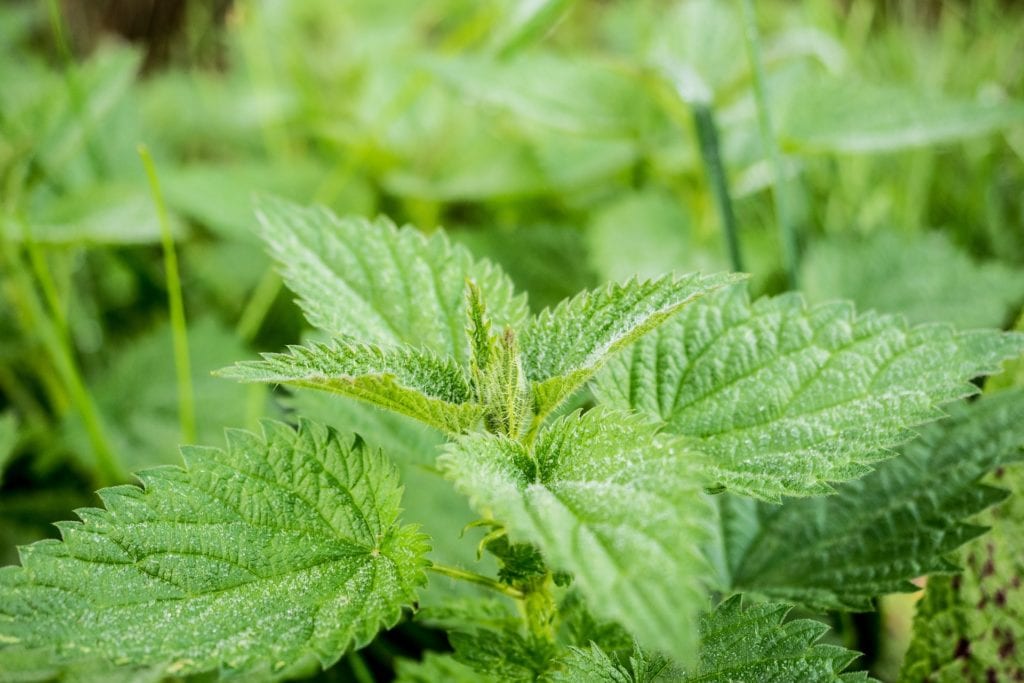In order for your lawn to grow healthily, several requirements must be met. Of course, there must be sufficient nutrients that are absorbed by the lawn. Optimal watering should also take place so that the lawn does not dry out.
One factor that is often neglected when it comes to soil is the pH value. This indicates whether the soil is too acidic or alkaline. A soil that is too acidic is hardly suitable for the lawn and will be associated with some problems in the long run.
Contents
- 1 What should the pH level be for the lawn?
- 2 The Ideal pH
- 3 How can you tell that the pH value is not optimal?
- 4 Moss in the lawn
- 5 Nettle
- 6 Lawn turns yellow
- 7 How can you measure the pH in the soil?
- 8 Soil samples for the laboratory
- 9 Self-test
- 10 What does an acidic soil mean?
- 11 What causes acid soil in the garden?
- 12 How can you lower the pH value?
- 13 When is it necessary to lime the lawn?
- 14 The perfect pH value of the lawn
- 15 Author
What should the pH level be for the lawn?
The soil has a significant influence on how well your lawn grows and how resistant it is to weeds and other diseases. If you re-seed your lawn every year, nutrients are removed from the soil and the composition changes. While you can use a lawn fertilizer to return the nutrients, it’s hard to prevent acidic soil from developing.
The pH value indicates how acidic or alkaline a soil is. Values in the range of 0 to 14 can be assumed for this purpose. Acidic soils would be found at about 0 to 5 on the scale, whereas alkaline soils range from 9 to 14.
The Ideal pH
There is no blanket way to tell what the ideal pH level is for your lawn. It depends on the exact type of lawn as well as the soil.
Generally, it is said that on light, sandy soil, a pH of 5.2 to 6.0 is ideal.
In a heavy and clayey soil, the optimal pH for the lawn is between 6 and 6.5.
A completely neutral soil would have a value of 7. So the lawn likes it when there is slightly acidic soil. The best way to find out exactly how high this should be is to ask the supplier of the particular type of lawn.
How can you tell that the pH value is not optimal?
If you have already seeded the lawn, there are several warning signs that the soil pH is not optimal. If you discover the following signs, you should measure the pH to take appropriate countermeasures.
Moss in the lawn
In acidic soils, the lawn is weakened and has a hard time holding its own against weeds. Moss feels comfortable in the slightly acidic range and requires hardly any nutrients. If it spreads around lawns and crowds them out, this is a clear sign that the soil is too acidic.
Nettle

Some plants prefer alkaline soil. If the pH is too high, the lawn is impressed by it and its health suffers. The stinging nettle thrives in the alkaline environment. If it is found more often in the lawn, this indicates that the pH of the soil is too high.
Lawn turns yellow
A common effect of insufficient pH is that the lawn loses its natural, green color. It appears increasingly yellowish and is no longer supplied with sufficient nutrients. If the blades of grass discolor, then urgently check whether the properties of the soil are satisfactory.
How can you measure the pH in the soil?
If you suspect that the soil does not correspond to the desired pH, you should make more detailed investigations. There are two main ways to do this.
Soil samples for the laboratory
One method is to take soil samples and send them to a laboratory. In a soil analysis center, the samples are examined and the exact properties are tested.
As a private person you can place an order in such a center. You will then receive the test kit and take the soil samples.
In order to get an exact overview of the pH-value of the soil, it is advisable to take some soil samples at different places. In this way, you compensate for fluctuations in the soil and know exactly what measures you should take.
You mix the individual soil samples and send the soil to the test center as described. This is a professional way to make sure what the pH of the soil is.
Self-test
A soil analysis does not always have to be done by a laboratory. Meanwhile, there are simple test kits with which you can determine the pH value on your own. While these prove to be less accurate, they are less expensive and require less effort.
In general, such a test requires that you fill soil into one of the tubes. Then you add the test powder and you shake the mixture. After waiting for about 10 minutes, you will know the pH value. So you have a first overview and with the help of the soil analysis you can confirm a possible suspicion.
What does an acidic soil mean?
So far, only relatively incomprehensible numbers have been talked about. If the pH of the soil is less than 7, it is considered acidic. But what exactly does such a soil look like and why does it occur in your garden?
Alkali and acidity
The pH value basically only indicates what the ratio of acid and alkali content is. If the acid content is higher, the pH value decreases and an acid soil is present.
A minimally acidic soil is advantageous for plants. They can absorb nutrients better there and grow better. In natural areas, acidic soils are found, for example, in bogs and coniferous forests.
What causes acid soil in the garden?
Acidic soil is rarely formed naturally in the garden. Usually the gardener is responsible for it when too much fertilizer is applied. According to the principle “much helps much”, any amount of fertilizer is put on the lawn to make it grow faster. But as a result, the soil becomes acidic and the next season growth is severely impaired.
How can you lower the pH value?

In most cases, the pH value in the garden will be too low. If your soil is too alkaline and you want to bring the pH below the limit of 7, you can do this, for example, by spreading leaves. You can put the leaves in a compost beforehand and scatter the mixture on your lawn in the fall. In this way you lower the ph-value in a natural and environmentally friendly way.
The incorporation of peat is not recommended. This will deprive the endangered bogs and disturb the ecological balance. Instead, try using a more compatible humus soil to improve the soil quality.
When is it necessary to lime the lawn?
If you have overdone it with fertilizing and have not cared for the soil sufficiently, it will be in a too acidic range. You now need to raise the pH level to restore the lawn to optimal growing conditions.
For this task, apply a lawn lime. You spread this either by hand or with a cart. It is advantageous if the weather is dry and windless.
After you have limed the lawn, a light watering is advisable. In this way, the lawn lime is better absorbed and the acidic soil is neutralized.
It is advisable to lime the lawn already in the fall. This will give the active ingredient enough time to take effect, and the soil will be of a higher quality in the spring. Again, take a soil sample to determine the pH level.
The perfect pH value of the lawn
If you discover that the lawn is discolored or weeds are spreading more, then you should check the pH level. If it is outside the 5.5 to 6.5 range, you should work on it and either lime the soil or use foliage to get a more acidic soil.
Take a soil sample in the spring and fall and test it for pH. This will ensure that you have the best conditions and that your lawn will grow optimally.









